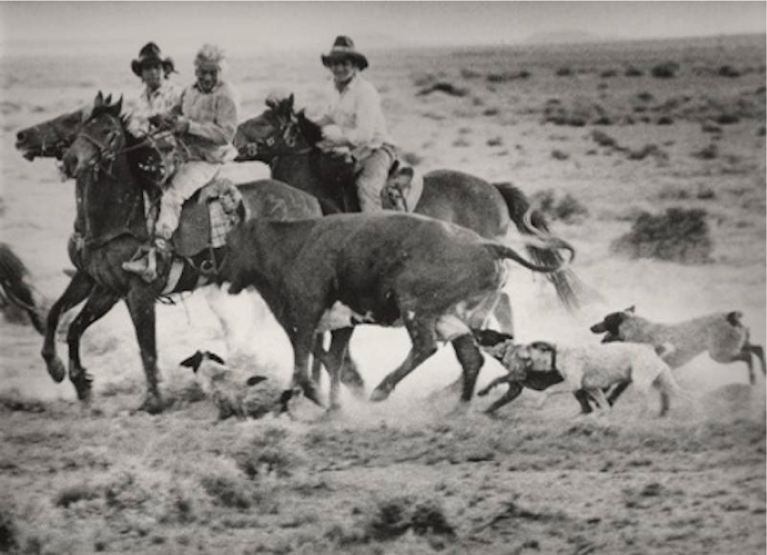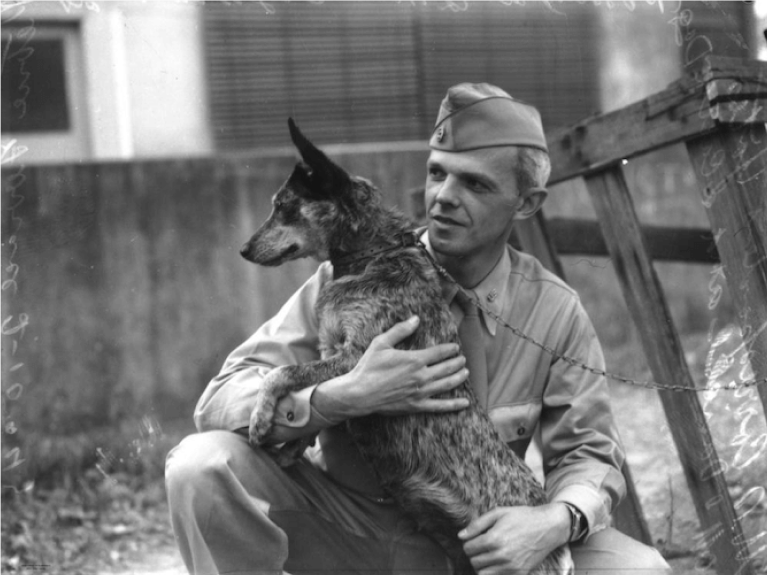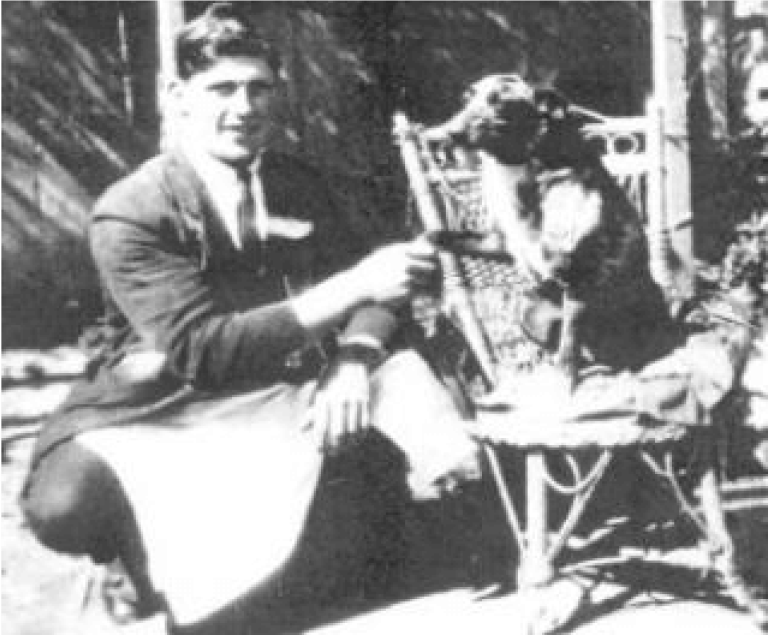Last Updated: 07/05/2025
Australian Cattle Dog Breed Guide
Wanting to know more about the true blue Aussie Cattle Dog? Take a look at our comprehensive facts and care tips in our Cattle Dog Breed Guide.
Author: Dr Carla Paszkowski BVSc (Hons)
Reading Time: 45 minutes - long read
A Complete Breed Guide for Australian Cattle Dogs
The Cattle Dog - also known as the Australian Cattle Dog or the Blue Heeler - is an incredibly clever, energetic and stoic dog breed. Originally developed by Aussie settlers to round and muster herds of cattle in the Aussie outback, this breed is still commonly used today as a herding dog. This is a dog who thrives when they have a job to do, bond particularly strongly with one owner or family, and need to be kept mentally stimulated.
As a family pet, the Cattle Dog can make a great companion. Cattle Dogs are extremely loyal and protective of their family, but can be wary of strangers. In addition to herding work, Cattle Dogs do well in canine sports such as agility, obedience, rally, flyball, and flying disc competitions. This isn't a dog for an apartment setting or a household that can't commit time for exercise and attention. Cattle Dogs need a high level of mental and physical activity every day to stay happy and healthy. If your home has some room to run, and your lifestyle is active enough to keep up with such an active breed, then a Cattle Dog may be just the pet for you!
Contents:
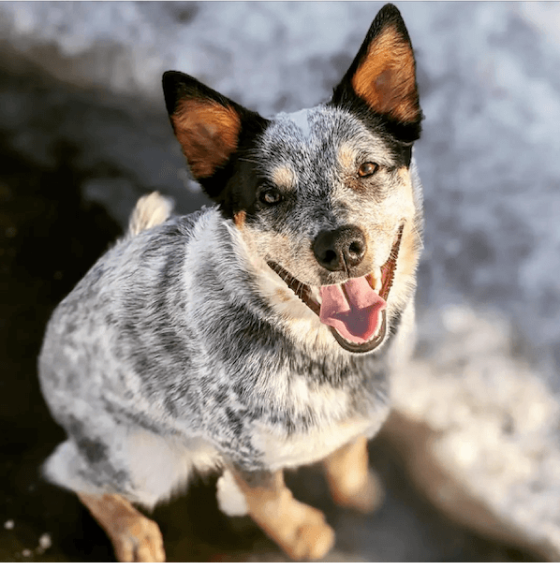
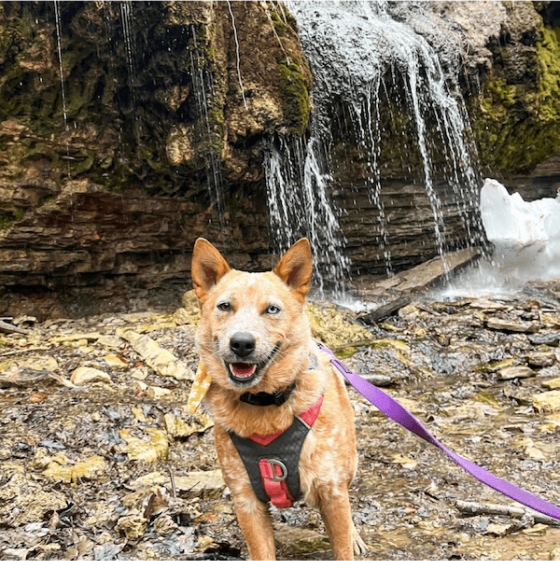
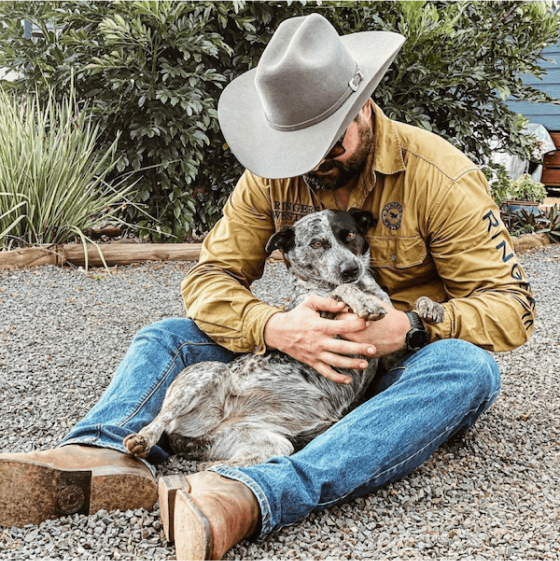
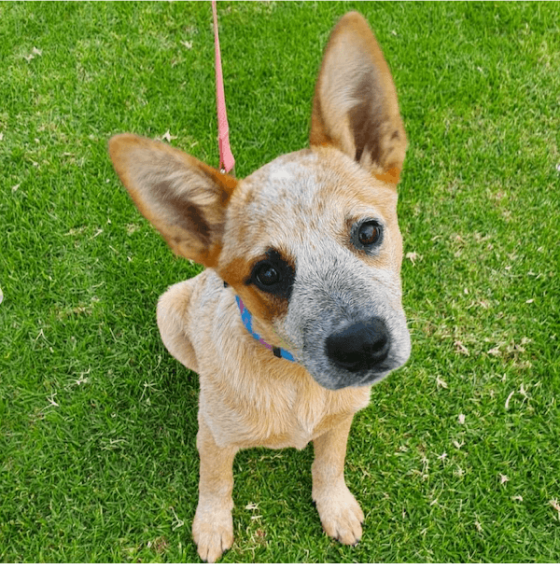
Cattle Dog Facts
| Â | Â | Â |
|
Breed size: |
Place of origin: |
Other names: |
|
Medium |
Australia |
Australian Cattle Dog, Blue Heeler, Queensland Heeler, Halls Heeler |
|
Breed group: |
Energy level: |
Weight range: |
|
Herding Dogs |
Very High |
17-22kg |
|
Life expectancy: |
Tendency to bark: |
Height range: |
|
12-15 years |
Moderate |
43-51cms height to shoulder |
|
Drool factor: |
Social needs: |
Coat length: |
|
Low |
High |
Short |
|
Shedding factor: |
Overall grooming needs: |
Colours: |
|
Moderate to high (seasonal) |
Weekly brushing |
Typically 'blue' or 'red'. Colours may range from blue and red speckle, with black, tan, red or blue markings. |
How big do Australian Cattle Dogs get?
Cattle Dog males are typically 43 to 51 cm tall at the shoulder and females are typically 43 to 48 cm. Both males and females can weigh between 17-22kg.
How much does a Cattle Dog cost in Australia?
An Australian Cattle Dog puppy usually costs around $700 AUD, but can be up to $3300 if purchased from a reputable breeder. Cattle Dogs and crosses are frequently available at animal shelters, so it is always worth checking your local rescue centres first - not only will this likely be cheaper than purchasing a dog from a breeder, but you will be saving a life!
Do Cattle Dogs shed?
Australian Cattle Dogs tend to shed in large quantities once a year, or twice a year in entire females. They have a double coat and shed heavily during the change of seasons, and moderately during the rest of the year. Regular hair brushing with a dog comb is essential, as is feeding them a top quality diet to keep their fur silky and smooth.
Are Cattle Dogs good pets?
With the right training, socialisation and exercise regime, Cattle Dogs can make excellent pets. They are loyal, affectionate, playful, and family-oriented dogs. However, because of their history as working dogs loyal to one farmer, they can be unfriendly to strangers.
How long do Cattle Dogs live?
The Cattle Dog lifespan is 12-15 years. As with any breed, they will live much longer if you feed them a premium quality diet, never let them become overweight, and keep their teeth in top condition!
Do Cattle Dogs bark a lot?
A mentally-stimulated cattle dog tends not to bark a lot. They were bred to be quiet, effective herders. However, due to their high intelligence, Cattle Dogs are prone to boredom which can cause excessive barking. They have a characteristic high-pitched loud bark, and they tend to bark when they feel their territory has been invaded. To reduce your Cattle Dog's barking, ensure you train with positive reinforcement from a young age and reduce problem behaviours before they begin!
How do I choose an Australian Cattle Dog breeder?
When looking for an Australian Cattle Dog, your options are to: a) adopt from a rescue (this is our top recommendation!) b) buy from an or online marketplace or pet store (NOT recommended!), or c) Research a reputable breeder. Never purchase a puppy without inspecting the breeder's premises and asking the 10 Breeder Checklist Questions first. Good breeders socialise their animals, house them humanely, allow you to inspect their premises, and selectively breed healthy traits and good temperaments. Read our Guide to Finding a Good Breeder for more tips.
Are Cattle Dogs good with kids?
Despite their size and stature, Cattle Dogs can be wonderful pets for kids due to their energetic, playful energy, and their loyal and protective nature. They are affectionate, playful and big enough not to get injured by kids. However, caution is advised around children unknown to the dog, as Cattle Dogs can be wary of strangers and may perceive the boisterous, confronting energy of children as a threat.
Cattle Dog History
The Australian Cattle Dog has an interesting history, as it is the only dog breed that was intentionally created from crossing domestic dogs with the wild Australian Dingo. Early Australian stockmen required a reliable dog that could herd thousands of animals spread across hundreds of acres in the harsh Aussie outback conditions. British Smithfields were used originally, but they couldn't tolerate high temperatures, lack of water, and challenging terrains.
So, throughout the 19th century, Smithfields and later Scottish Highland Terriers were bred with wild Dingoes. A man named Thomas Hall created a breed called 'Hall's heelers' from these mixes which worked well in the Aussie outback and herded cattle well. A while later, two brothers named Jack and Harry Bagust mixed in some Dalmatian traits to help Hall's heelers become more affectionate with humans. The black-and-tan Kelpie was also mixed in to improve its working abilities.
Now, as a testament to their Dalmatian ancestry, most Australian cattle dog pups are born white and develop coat patterns as they mature. After further breeding refinements in the 20th century, the American Kennel Club recognised the Australian Cattle Dog as a pure breed in 1980. They are now as popular in the USA as they are in Australia, partly due to their popularity with celebrities such as Matthew McConaughey and Owen Wilson.
Cattle Dog Personality and Temperament
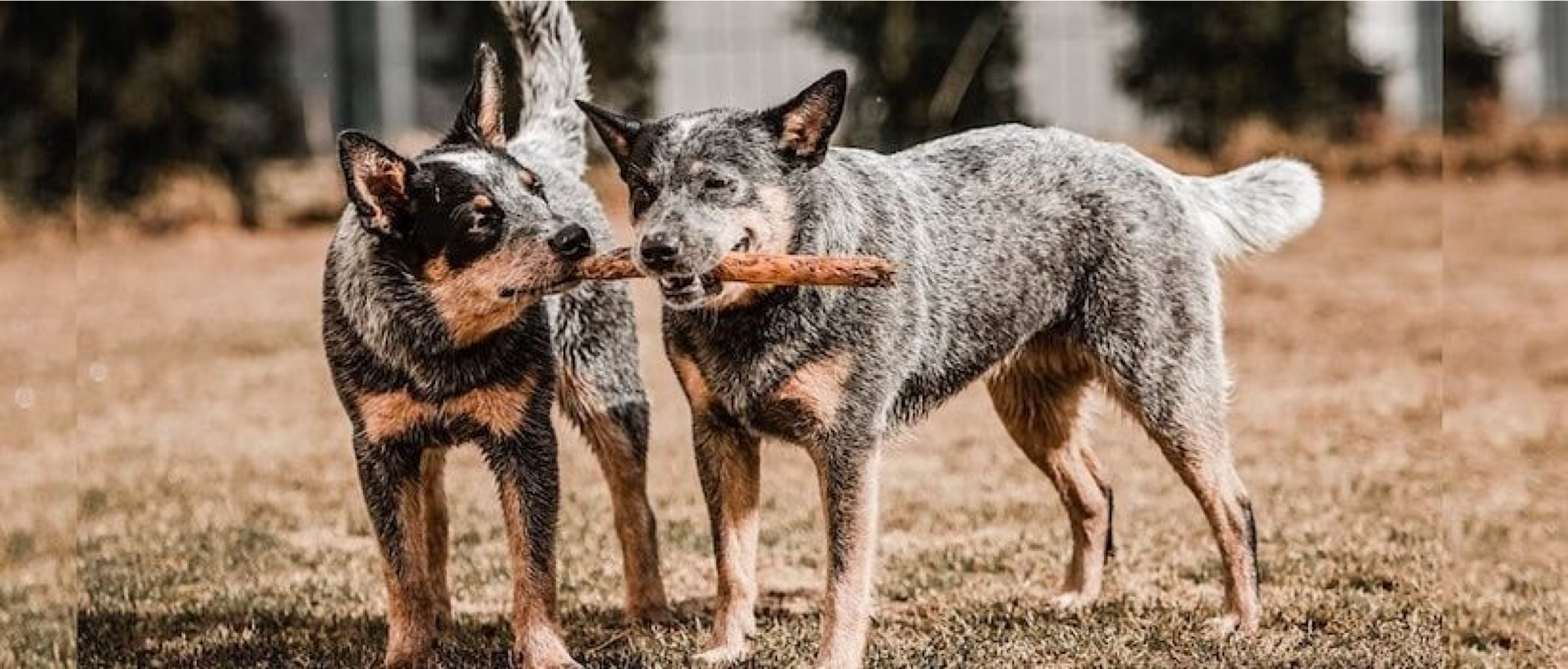
Cattle Dogs are known for being loyal, energetic, protective, and independent. They have an incredibly keen intellect, exceptional problem solving skills, and take guarding responsibilities seriously. They create a very strong bond with their owner. They have endless energy and are very agile, and can learn an almost unlimited amount of commands and tricks.
Due to their history as herding and working dogs, the Cattle Dog is very active and independent. They are smart but can also be stubborn and willful. Getting their independent streak under control requires persistent positive training.
Cattle Dogs require a very high level of exercise and mental stimulation. Simply leaving them in a yard to 'run around by themselves' is not enough - at least one hour of high intensity exercise is required each day, and preferably by your side. This may include playing fetch, walking, swimming, or running - in fact, the Cattle Dog is likely to be the best running buddy you've ever had!
Additionally, proper training and socialising are essential for a well-rounded and mentally healthy pup. It's recommended to start socialisation and firm training as early as possible to avoid bad habits and aggression. Their large, strong, muscular frames mean they're very powerful and energetic. They have a great work ethic, so these dogs need to be well stimulated. A Cattle dog can adapt to any lifestyle, when given plenty of attention, training and exercise.
Top toy recommendations for Cattle Dogs
The ideal toys for a Cattle Dog should encourage interactive play and problem-solving to keep them mentally stimulated, and robust enough to withstand some rough playing. Any toy that helps challenge their wits and keeps their mind busy is key - particularly puzzle feeders and ball throwers!
Fill the this bouncy ball with some of your dog's kibble to slow their eating or to keep them occupied and out of mischief.
Made with highly visible, fast drying neoprene, this special Wet Wubba is ideal for games of fetch in and out of water.
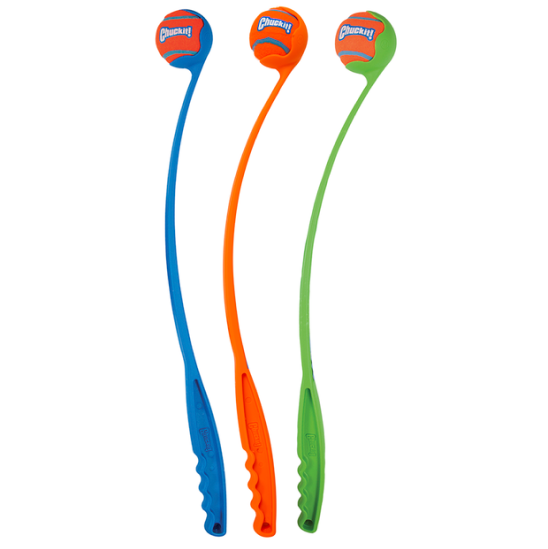
An extra long ball thrower to help you launch your Rottie's ball further than ever before to satisfy those intense fetch cravings!
This creative contraption doubles as a slow feeder and an interactive puzzle, keeping your cattle dog entertained at mealtime!
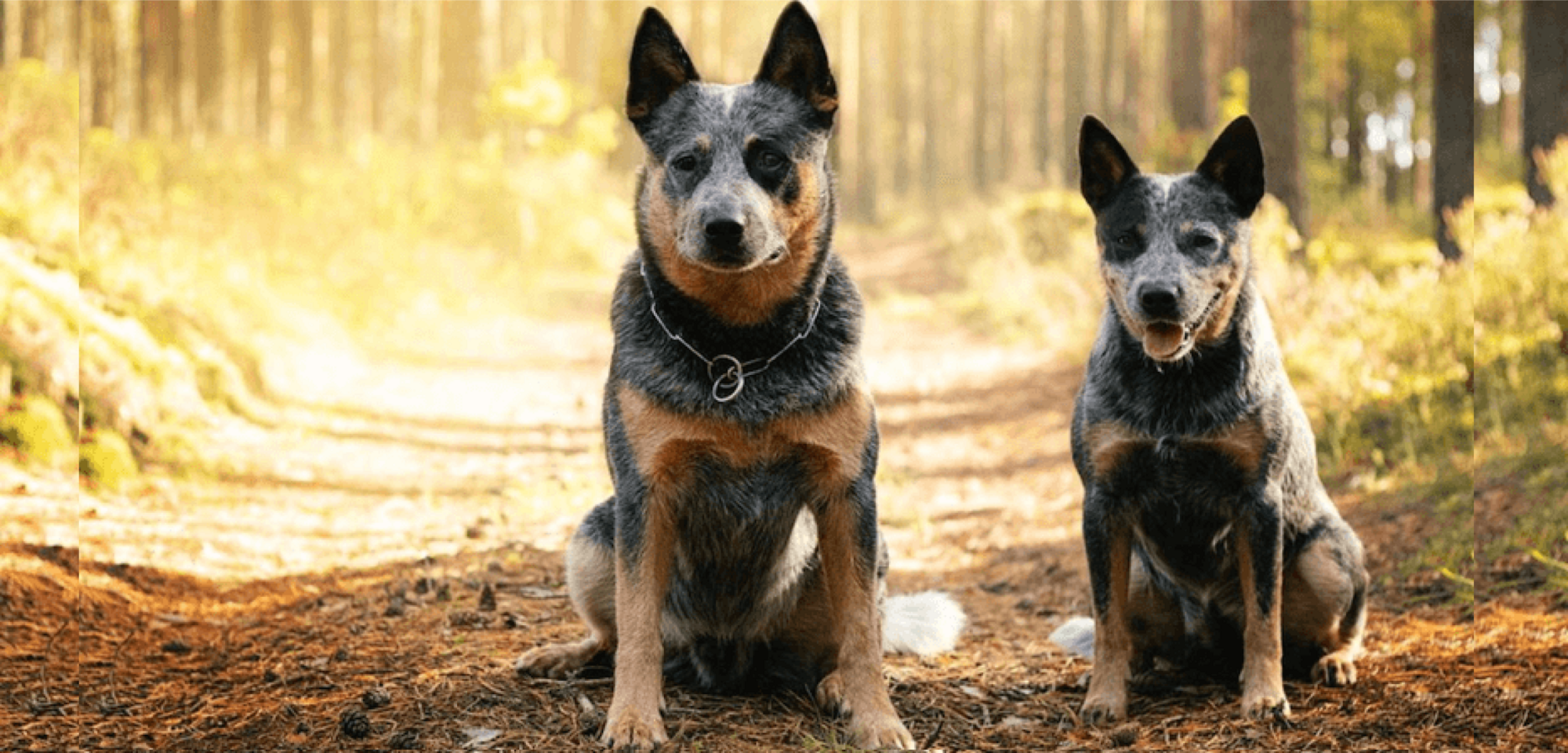
Common Cattle Dog Health Problems
Australian Cattle Dogs are generally fairly healthy - after all, they were bred to be resilient, AND have the benefit of inter-species Dingo-Dog hybrid vigor in their DNA! However, they can be prone to deafness, progressive retinal atrophy, and hip dysplasia.
Deafness
Deafness occurs in Cattle Dogs and can be detected from as early as four weeks of age, and is usually hereditary. If you believe your Cattle Dog puppy is suffering from deafness, your vet can perform some tests to determine the extent of their hearing.
Progressive Retinal Atrophy
Progressive retinal atrophy refers to the deterioration of the retina (the vascularised layer at the back of the eye). During the early stages, a dog may experience reduced vision at night, and then eventually lose their sight during the day, too. Most dogs learn to adapt to vision loss quite well except when faced with new or changing environments.
Hip dysplasia
Hip dysplasia is a condition where the femur and hip joint do not fit together properly, causing pain and lameness. Less severe cases can be treated with anti-inflammatory medication, however surgery may be required for serious cases.
As with any type of joint disease, arthritis can be a concern. Take a look at our article Arthritis Care in Dogs to see how to protect your Cattle Dog's joints.
Cattle Dog Diet and Nutrition
Cattle Dog Puppies
Some points to note about Cattle Dog puppy ownership include:
⢠Food: Cattle Dog puppies should eat a premium, medium or 'all' breed formula such as Royal Canin Medium Junior, Hills Science Diet Puppy, Advance All Breed Puppy Food or Black Hawk Medium Puppy until they are 12-18 months of age.
⢠Behaviour: Cattle Dog puppies have lovely playful personalities but they do like to chew and destroy things, just like any puppy! Puppy proofing your house is essential. Remove any easy-to-reach toxins or electrical cords, and provide plenty of puppy toys!
⢠Worming: Australian Cattle Dog puppies need to be wormed fortnightly from the age of 2-12 weeks, and then once per month after this. Cattle Dog puppies in Australia also require heartworm protection - you can either opt for a heartworm injection yearly at your vet, or you can simply give a monthly treatment such as Nexgard Spectra, Simparica Trio, or Credelio Plus.
For more helpful information on worming, training, socialisation, and nutrition, consult our veterinary-written Complete New Puppy Guide.
Want more guidance? Take a look at these recommended articles:
Top food recommendations for Cattle Dog Puppies
This premium dry food is specifically formulated to support the health and wellbeing of medium breed sized puppies.
This premium puppy food is designed alongside Hill's world class research, to ensure a complete and balanced diet for growing puppies.
This Australian made, high quality puppy food is designed to support healthy growth and development of all breeds of puppies, including Cattle Dogs.
This high quality, natural Australian made food contains lamb as its first ingredient and is perfectly balanced to provide optimal nutrition to growing puppies.
Top food recommendations for Adult Cattle Dogs
Although there are no specific feeding requirements for a Cattle Dog adult, it is very important that you feed a suitable premium diet. This food needs to be age appropriate and meet all of their daily nutritional and energy demands. Most all breed or medium adult diets from premium brands including Hills Science Diet, Royal Canin, or Advance dog food are suitable for Cattle Dogs. These scientifically-formulated diets also contain balanced levels of protein, fat and carbohydrate plus vitamins, minerals and antioxidants for health and wellbeing.
Perfect for highly active working dogs such as livestock herding Cattle Dogs, this super premium, Australian made food contains increased calories to support a higher energy requirement.
With kibble specially designed for medium sized dogs, this premium quality food contains nutrition tailored to the specific requirements of adult Cattle Dogs.
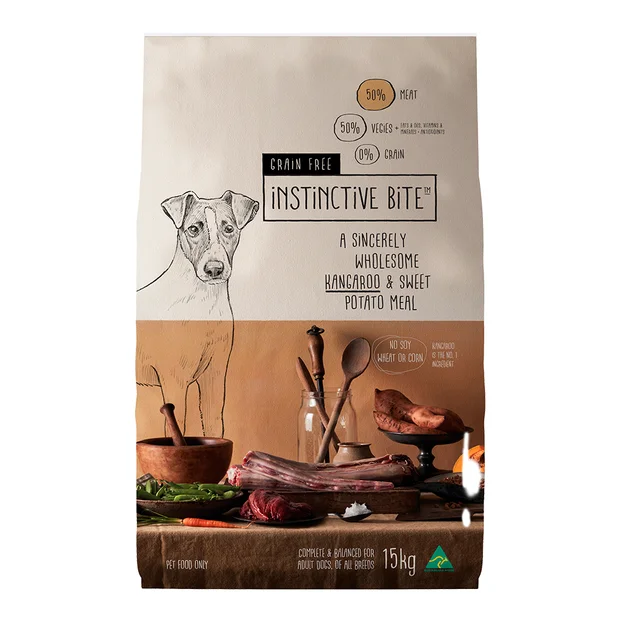
Grain free and made in Australia, this kangaroo-based diet is perfect for the descendents of dingoes. With high quality lean protein, it will keep your Cattle Dog nourished and happy.
Ziwi is the perfect choice for high energy working breeds like the Cattle Dog, as it is made with high levels of protein, fat and bone from real raw meat and organs.
Related Breeds
The Cattle Dog is part of the 'Herding Dog' breed group. Due to the Cattle Dog's history of being developed using other breeds such as the Dalmatian and Kelpie, these breeds tend to be the closest relatives.
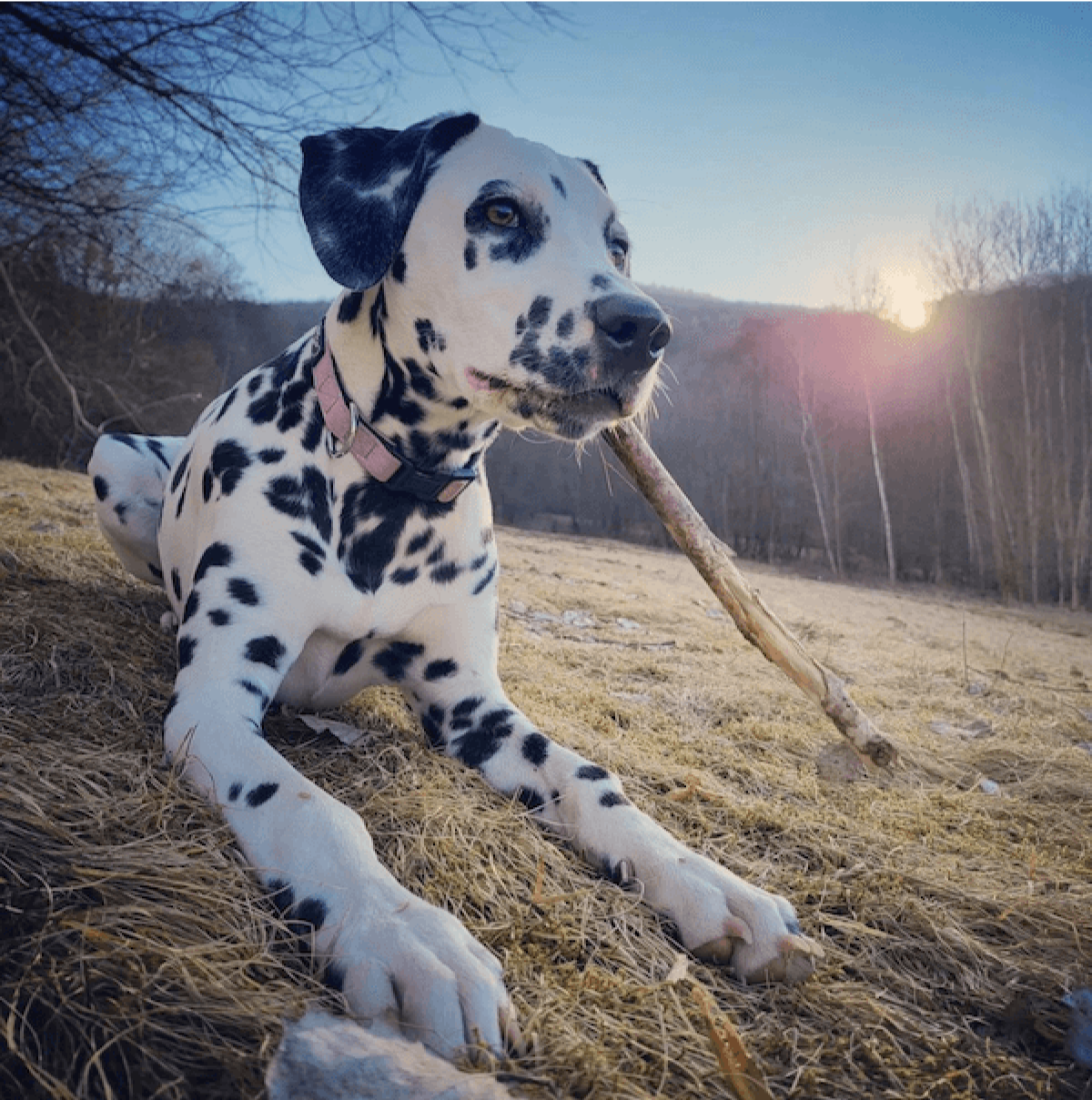
Dalmatian
The Dalmatian is a medium to large sized breed of dog best known for its distingishing spotted coat. An old and much-loved breed, the Dalmatian has a temperament which is affectionate, independent, and playful. The Dalmatian was added to the Cattle Dog mix in the 19th Century to make it more affectionate to humans.
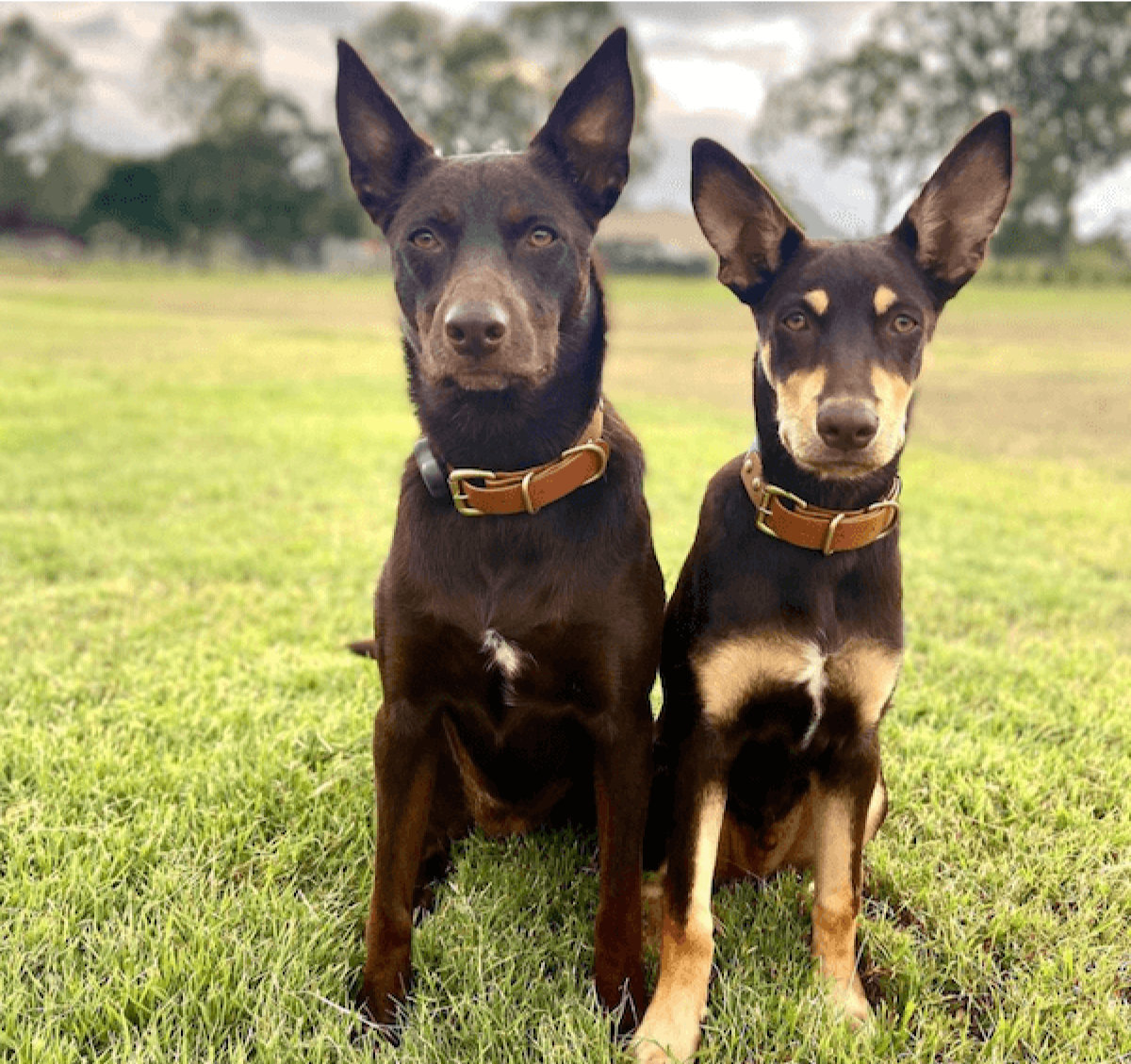
Kelpie
Like the Cattle Dog, the Kelpie is a hardy Australian working breed that was developed to herd livestock. The Kelpie is slimmer and taller than the Cattle Dog, and has a much different coat colour range which may be red, black, black and tan, chocolate, or tan. The Kelpie is just as smart and active as the Cattle Dog has similar requirements for heavy daily exercise and mental stimulation.
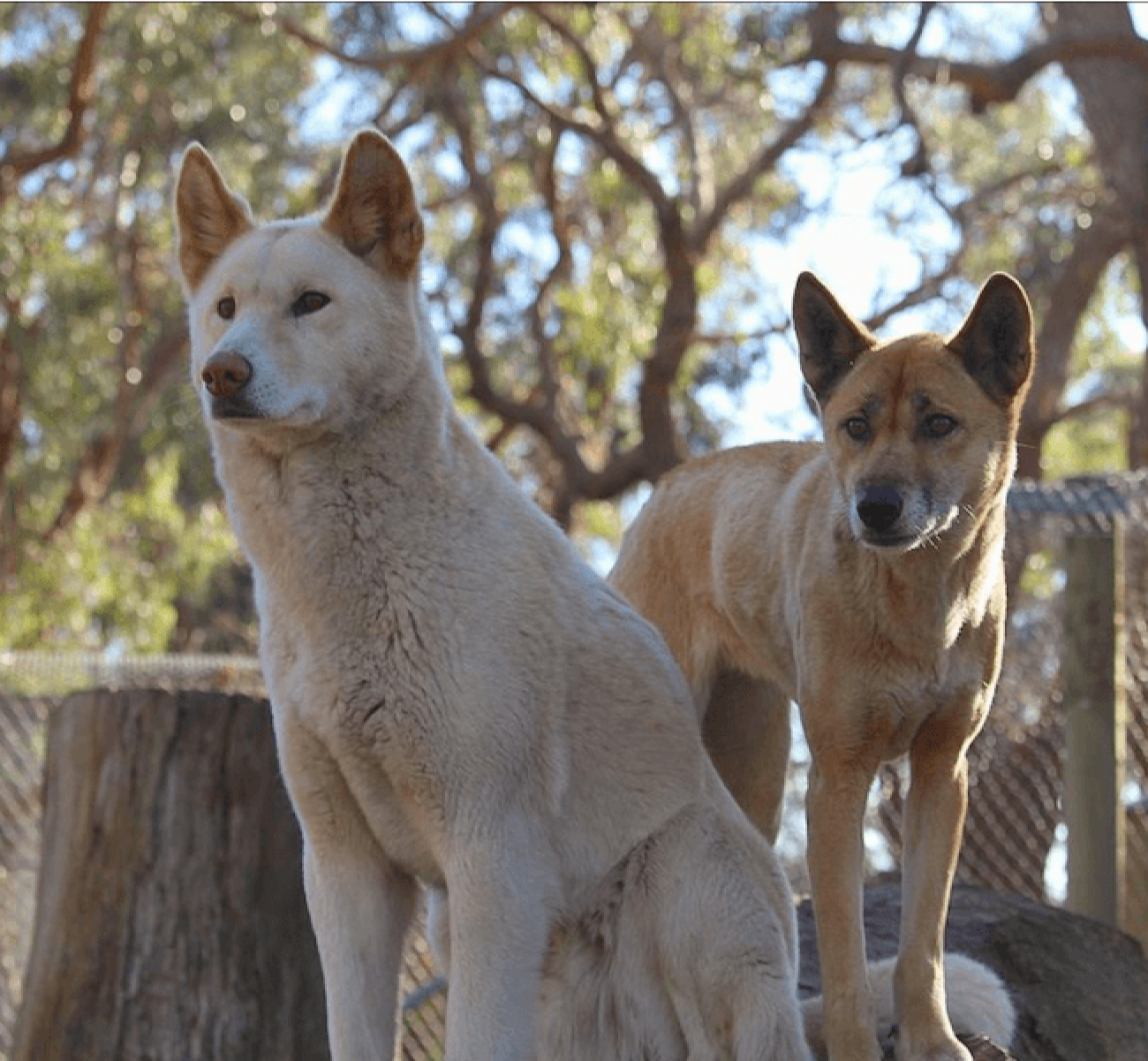
Dingo
The Dingo is a wild species of dog native to Australia. Like wolves and foxes, the Dingo is a taxonomically different subspecies to the domestic dog. There is actually some debate about whether the Dingo is a subspecies of wolves or a subspecies of dogs - and therefore its species name is sometimes referred to as Canis lupus dingo (Canis lupus are wolves) and also Canis familiaris dingo (Canis familiaris are dogs). However, Dingoes and dogs are similar enough that the two can interbreed and create fertile offspring. A Dingo Licence is required in most Aussie states if you want to keep a dingo as a pet.
Further Reading
Want to know more? Check out our Discover Page for more tips from our expert vets on keeping your pets happy and healthy.
